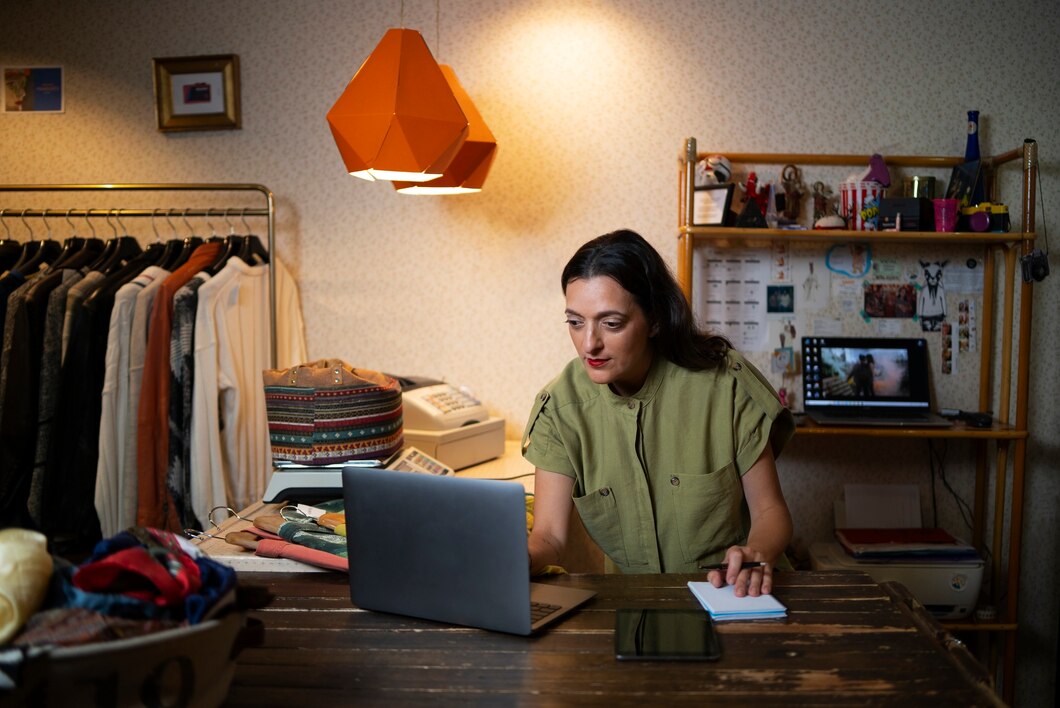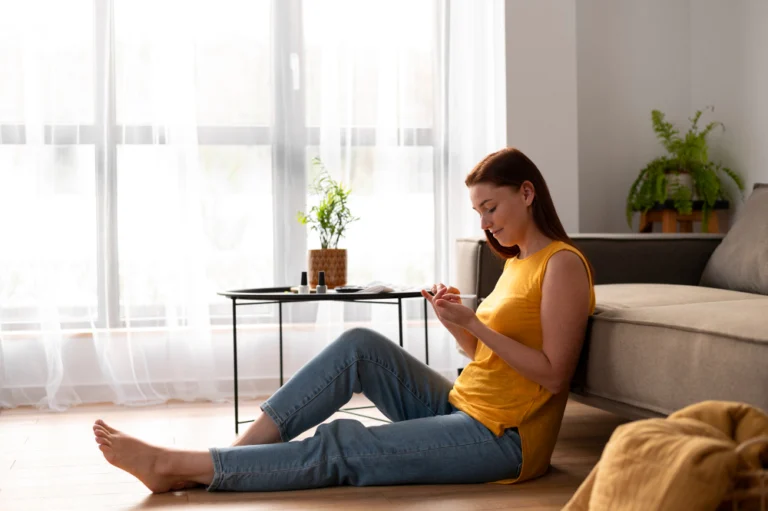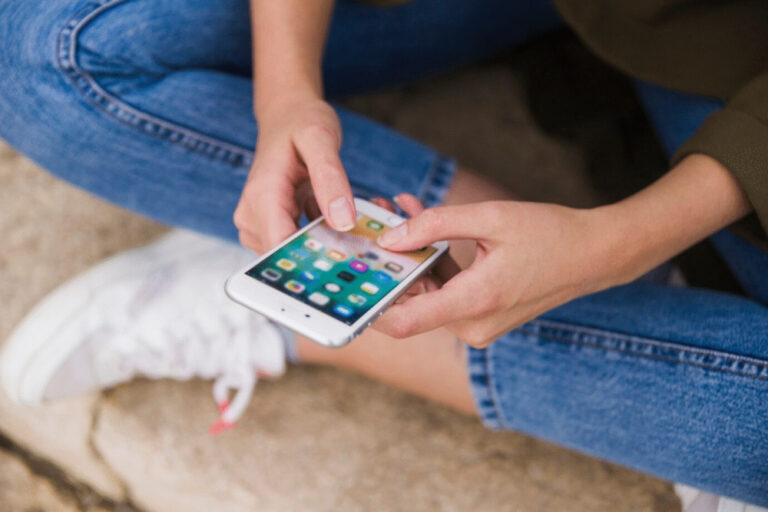
In today’s hyperconnected world, constant notifications, overflowing inboxes, and endless scrolling have become the silent thieves of attention. If you’ve ever felt mentally overloaded, creatively numb, or simply exhausted by your digital habits, you’re not alone. This guide will walk you through essential digital declutter designed to help you reclaim your focus, perform an effective digital clutter cleanup, and embrace the principles of digital minimalism—so you can feel lighter, more productive, and more in control of your time.
What Exactly Is Digital Decluttering (and Why Does It Matter)?
Digital decluttering goes far beyond deleting a few files or uninstalling unused apps. It’s the intentional process of removing digital excess so your mind can breathe again.
Just like physical clutter, digital clutter creates friction:
- Too many notifications interrupt your workflow
- Overloaded inboxes fuel anxiety
- Hundreds of apps and files slow down your devices
- Social media overload drains emotional energy
- Compulsive screen habits reduce focus and productivity
Digital clutter accumulates quietly over time. Even if you don’t physically see it, your brain feels it—every day.
A proper digital clutter cleanup helps reset your mind, improve your mental clarity, and carve out more time for meaningful work and real-life connections. This is where digital minimalism comes in: a mindset that prioritizes intentional digital choices over mindless consumption.
Why You’re Losing Focus (and Don’t Even Realize It)
Modern technology is designed to capture attention, not protect it. Every swipe, notification, and pop-up competes for mental space. The more cluttered your digital environment is, the harder it becomes to stay focused.
Here’s how digital clutter secretly sabotages your brain:
1. Constant interruptions destroy concentration
The average person receives 80–120 notifications per day. Each interruption adds cognitive load, making it harder to return to deep work.
2. Decision fatigue drains mental energy
Too many apps, photos, emails, and files create thousands of micro-decisions you make unconsciously:
- Should I delete this?
- Should I open this app?
- Should I reply now or later?
These small decisions pile up and exhaust your mental reserves.
3. Your brain is overloaded with information
Information overload is real. When your phone, laptop, and inbox constantly bombard you, your brain struggles to filter what actually matters.
4. Digital chaos increases anxiety
Unread messages, messy desktops, and endless tabs send your brain into a constant alert mode.

Benefits of Digital Decluttering
Adopting the right digital decluttering tips and embracing digital minimalism can transform not only your digital life but your mental wellbeing.
1. Sharper Focus
Decluttered digital spaces mean fewer distractions, helping you stay present and productive.
2. Reduced Stress
A tidy inbox, organized files, and fewer apps lighten your mental load.
3. Higher Productivity
Not having to search through clutter saves time and energy.
4. Better Sleep
Less evening screen exposure results in deeper, more restful sleep.
5. More Creativity
A quieter digital environment frees up mental space for imagination.
6. Stronger Real-Life Connections
Reduced digital noise encourages more meaningful offline interactions.
Digital Declutter 101: A Complete Step-By-Step Process
Below is a detailed guide you can follow to eliminate digital overwhelm and reclaim your focus.
STEP 1: Declutter Your Devices
Your phone and laptop are the biggest sources of digital chaos. Start with the following digital clutter cleanup tasks:
Delete Apps You Don’t Use
Most people use only 10–20 apps regularly—yet keep 100+ installed.
Ask yourself:
- When did I last use this app?
- Does it add value to my life?
- Does it distract more than it helps?
Uninstall:
- Games you never play
- Social apps you signed up for and forgot
- Shopping apps that push unnecessary notifications
- Duplicate productivity tools
Digital minimalism is about keeping only what serves your purpose.
Organize Your Home Screen
Your home screen should be functional, not chaotic.
Try this method:
- Keep your most essential tools on page 1
- Move distracting apps to a hidden folder
- Delete unnecessary widgets
- Remove icons from the dock on desktops
A clean home screen sets the tone for mindful usage.
Clear Your Photo Gallery
Most people have thousands of duplicate or meaningless photos.
Do a quick photo purge:
- Delete screenshots you don’t need
- Remove blurry photos
- Delete images already backed up
- Use an auto-cleanup tool
This is one of the most overlooked digital decluttering tips.
Tidy Your Downloads Folder
This folder is a digital landfill for many users.
Sort your downloads into:
- Documents
- Images
- PDFs
- Videos
- Installers
Delete outdated or duplicate files.
Update and Uninstall Browser Extensions
Extensions slow down performance and clog your workflow.
Remove anything you don’t actively use.
STEP 2: Declutter Your Inbox
Email overload is one of the biggest contributors to stress.
Unsubscribe from Unnecessary Emails
Marketing emails you never open? Stop letting them pile up.
Dedicate 10 minutes to:
- Unsubscribe from newsletters
- Disable promotional alerts
- Remove subscription-based spam
Set Up Smart Filters
Filters categorize your emails automatically:
- Work
- Family
- Bills
- Notifications
- Promotions
A smart email system helps maintain digital minimalism long-term.
Delete or Archive Old Emails
You don’t need 5 years of unread newsletters.
Try this trick:
- Search “unsubscribe” → delete all
- Search “no reply” → archive
- Search promotional categories → purge
This simple digital clutter cleanup can free up gigabytes of space.
Use the “Inbox Zero” Method
You don’t need to literally have 0 emails—just zero stress.
Create 3 folders:
- Action Needed
- Read Later
- Archive
Sort emails instantly to avoid buildup.
STEP 3: Declutter Your Social Media
Social media is designed to consume your time. Use these digital decluttering tips to take control:
Unfollow Accounts That Don’t Serve You
Ask:
- Does this account inspire me?
- Does it educate me?
- Does it make me feel good?
If not → unfollow.
Remove Toxic Groups or Chats
WhatsApp groups, Facebook groups, and Telegram channels can be overwhelming.
Leave those that:
- Send spam
- Drain your energy
- Don’t align with your priorities
Turn Off Social Media Notifications
This is a core principle of digital minimalism.
Turn off:
- Likes
- Comments
- Suggested posts
- Followers
- Friend activity
You don’t need instant updates.
Set Time Boundaries
Social platforms are engineered to keep you scrolling endlessly.
Try:
- 30 minutes per day
- No morning social media
- No social media after 9pm
STEP 4: Clean Up Your Digital Workspace
Your digital work environment influences your mental focus.
Organize Your Desktop
Your desktop is like your work desk—keep it clean.
Steps:
- Create folders for categories
- Delete outdated shortcuts
- Remove files after use
- Store only active projects there
Close Unused Tabs
Open tabs represent open mental loops.
Use tab groups or bookmarking systems to reduce clutter.
Organize Your Cloud Storage
Whether you use Google Drive, OneDrive, or Dropbox:
- Delete duplicates
- Clean old documents
- Create folder categories
- Archive completed projects
Refresh Your Task Management System
If you use multiple planning apps, consolidate into one.
A clutter-free task system helps reclaim your focus and reduce overwhelm.
STEP 5: Streamline Your Notifications
Notifications are the #1 focus killer.
To embrace digital minimalism, disable:
- Social media alerts
- Promotional alerts
- Shopping updates
- Random app notifications
Keep only:
- Calls
- Messages from key people
- Calendar events
- Work-related apps (if essential)
STEP 6: Declutter Your Digital Habits
Digital decluttering isn’t just about files—it’s about behavior.
Identify Your Digital Triggers
Do you:
- Pick up your phone when bored?
- Scroll social media while working?
- Check notifications as soon as they appear?
Understanding habits is key to long-term change.
Create Screen-Free Zones
Some examples:
- Dining table
- Bedroom
- Morning routine
- Walks
This helps you reclaim your focus and reconnect with reality.
Schedule “Digital Detox” Hours
Try:
- 1 hour per day
- 1 full morning per week
- 1 weekend per month without screens
These breaks refresh your mind and reduce digital fatigue.
Embrace Digital Minimalism Principles
Digital minimalism encourages:
- Intentional usage
- Prioritizing offline life
- Keeping only essential tools
- Reducing unnecessary digital noise
Building a Sustainable Digital Minimalism Lifestyle
Decluttering once is helpful—but building habits is what transforms your life.
Here are long-term strategies:
1. Regular Digital Check-Ins
Do a digital clutter cleanup every month:
- Inbox sort
- Photo cleanup
- Unused apps removal
- Desktop organization
2. Mindful Device Usage
Before picking up your phone, ask:
“What is my purpose right now?”
If you don’t have one → put it down.
3. Use Apps That Encourage Focus
Tools like:
- Forest
- Freedom
- StayFocusd
- RescueTime
These apps support focus and help reduce digital distractions.
4. Limit Multi-Tasking
Multi-tasking is a myth. Your brain constantly switches between tasks, decreasing efficiency.
Focus on one thing at a time.
5. Prioritize Real-Life Experiences
Digital tools are useful, but real-life moments matter more.
Spend time:
- Outdoors
- With people you love
- Doing activities that recharge you
This is the heart of digital minimalism.
How Digital Decluttering Helps You Reclaim Your Focus
After following these steps, you’ll notice:
- Increased clarity
- More time for actual work
- Reduced mental fatigue
- Better emotional balance
- Higher motivation
- Stronger creativity
Your brain performs best with space—not constant stimulation.
A cleaner digital life creates a cleaner mental life.
Conclusion: Declutter Your Digital Life, Reclaim Your Mind
Digital overload is the new normal—but it doesn’t have to control you. With the right digital decluttering tips, intentional habits, and a commitment to digital minimalism, you can perform a powerful digital clutter cleanup and finally reclaim your focus.
The goal isn’t to abandon technology—it’s to use it purposefully, without letting it dominate your time or your mind.





